The kids and I worked outside much of the day. It was a little bitter. Although windless, the temp never got above the low teens and the sun was hidden behind thick clouds that spat snow on and off through the day. There was hay to fork, cattle to sort, wood to cut, and dog housing to build (for the border pups).
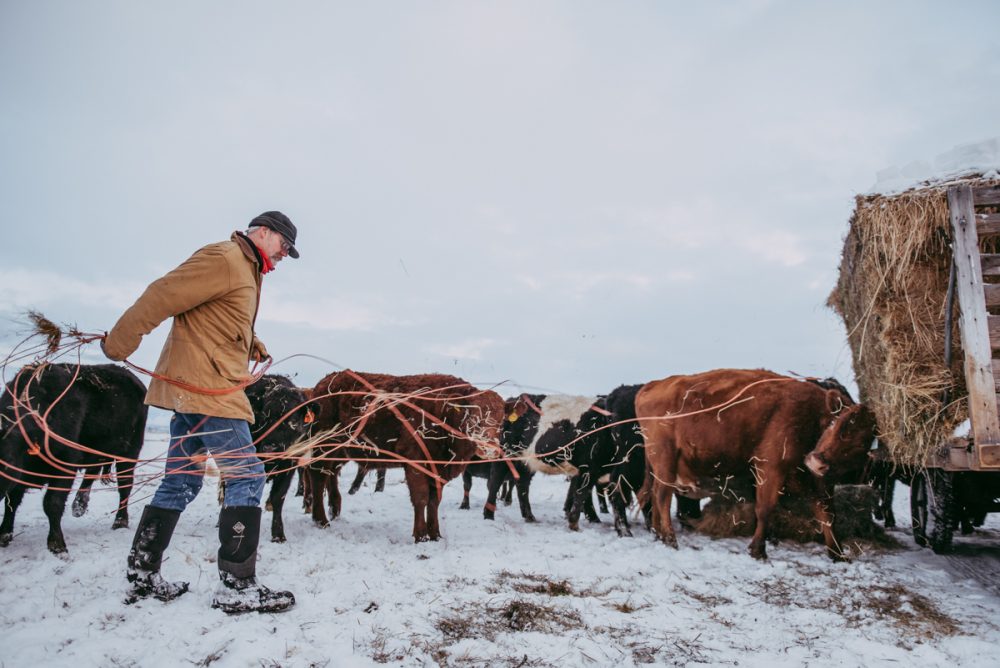
Fences had fallen down with the heavy snow and needed to be mended. Through it all, we just trudged along through 8 inches of fresh white.
Layering is the name of the game. We all had several layers on—when we got too hot from hucking hay, we just peeled one off, to put it on later again as the light started failing and the temps dropped into the single digits.
Then, after dark, we came in. The kitchen felt warm. We ate, hungrily, caloric caution to the wind. And we were satisfied by fats, proteins and complicated carbs. We’ll sleep good tonight.
And we’ll wake refreshed and ready to go tomorrow.
There are engines on our ranch. Not many, but we use them. Call it technology, if you will. Chainsaws, backhoes, pickups and four-wheelers. We may fire up the old Allis Chalmers tractor to plow deep snow. All of these reduce the time spent on physical exertion activities. We rely on internal combustion to some degree. But if all fails, we have options to carry on without any of it, under human and animal power alone.
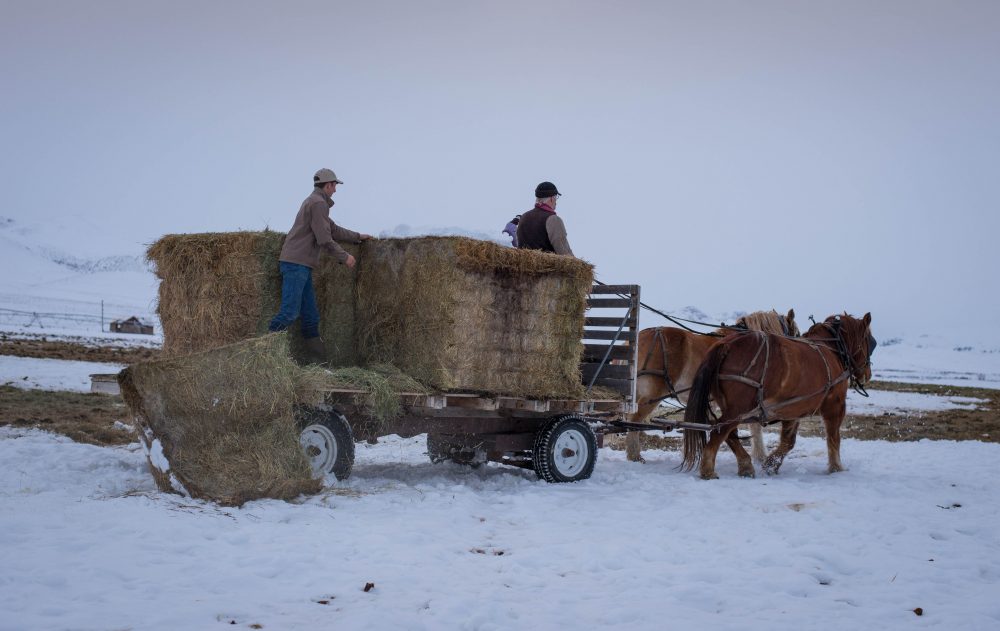
This has actually happened several times in the dead of winter over the past ten years.
Thirty-five below zero. Engines won’t start. Diesel gels. Powerlines break.
And then we can always come back to ‘ol reliable: muscle power. If we aren’t muscle-ly enough, we might use a horse. And we’ll always use a cow—bovines will do the harvesting, the spreading of manure for us.

We don’t own a manure spreader, except those with four legs.
We’ll use human power whenever possible. We’ll take it over a labor-saving device almost any time.
My ancestral forebears go back centuries (likely around 900 years) on dairy farms along the coast of the North Sea. Their work was all muscle—for centuries. They cut hay with scythes and hauled their milk in cans on dog or horse powered wagons. Cattle harvested their own grass; milking was in the field (rain or shine) where the cows stood that day. There were no sanitation issues. There were no milking parlors or carousel milkers with computerized robotic power takeoffs when the cow gave her all, as there is today.
I’ve seen pictures of uncles and great uncles. Holstein cow farmers. Cattlemen. Dairymen. They were skinny and tall, like me. Many of them lived to old ages, despite the saying that they worked themselves into the ground (is that so bad?).
I worked on dairies and muck farms when I was growing up. It was the same thing. I was in a crew of pickers and weeders. We crawled along the ground, backs to the sun, often laughing our way to the end of the row, where there was a water jug. We were a weeding, picking tribe, competing our way with big burlap sacks of sweet corn. Or sugar baby watermelons. And it was so hot and humid (99 and 99). But the tribal pickers would talk, laugh and work their way down through fields while sampling the bounty.
But I think this is all different now.
When I reflect on this, my not too distant past, I think we have lost our way in agriculture.
I first noticed the change in the midwestern coffee shop.
Sandy’s Cafe. On the outskirts of Waterloo, Iowa. It could have been anywhere in the corn belt. But it was new territory for me, as I had come off the muck and dairy regimen and took a job on a corn and bean farm.
Iowa is corn country. The boundless rows of green rustle in the hot breeze, rising from the plains on a summer day. Thunderheads form with clockwork regularity. They douse the crops fairly reliably, almost guaranteeing yield of big ears of commodity corn. When it’s hot there, and there is plenty of soil moisture, when walking the rows, they say you can hear the corn grow.
I believe it. I think I’ve heard it.
There isn’t a lot going on in midsummer in the corn belt. The crop is in. It has been sprayed appropriately with chemicals to prevent any insect interlopers from harming the crop. It is now too tall to side-dress with fertilizer or cultivate for weeds.
So you go with farmers to the coffee shop. Sandy’s. And drink several cups of the watery fare, and maybe try a piece of pie.
You talk about the weather, first. Then you talk about markets. Then, you delve into gossip—who just bought a new pickup—or maybe a combine.
These are wonderful people here, at Sandy’s. They are the salt of the earth. Genuine.
And they are almost categorically having health problems.
Most of them are overweight. They may have diabetes. Many I speak with have sleep apnea. They use CPAPs to ensure that they get enough oxygen when they sleep.
These are farmers. On top of it, most of them are more in debt than any other category of Americans. They are beyond up to their eyeballs.
And a lot of it is to have the right to purchase green paint. John Deere is the implement of choice for most of them. They may be sitting in or on or pulling a total of a million dollars in highly technological computerized rusting iron.
It wasn’t an instantaneous change from the sinewy farmer to the one who spends over 98 percent of his time at work on his or her butt.
But it all happened in just one century.
And with it has come, I think, a loss of touch with the soil, the land. The intimacy with the terroir of each square foot is missing. We’ve lost contact with the bird, the bee and the beetle. We no longer spend time with them.
Instead, we speed by on our labor-saving devices, working for the economy of scale as they say.
I remember talking to a neighboring rancher about feeding cattle. It was below zero that day, and he had just stepped out of his John Deere 9000 series 4WD tractor sporting 8 big lug tires on it. He was wearing a T-shirt and held a Pepsi in his hand. Behind the tractor was a PTO driven contraption that ripped hay bales into shredded pieces. Six tons could be fed to waiting cattle at a time with its conveyor driven efficiencies.
He could feed in half the time it took us just to get to the field.
We were quite bundled up, and I had two kids with me for our feeding. We were on a hay rack, carrying 3 tons of hay at a time, pulled by our team of draft horses, Red and Snap.
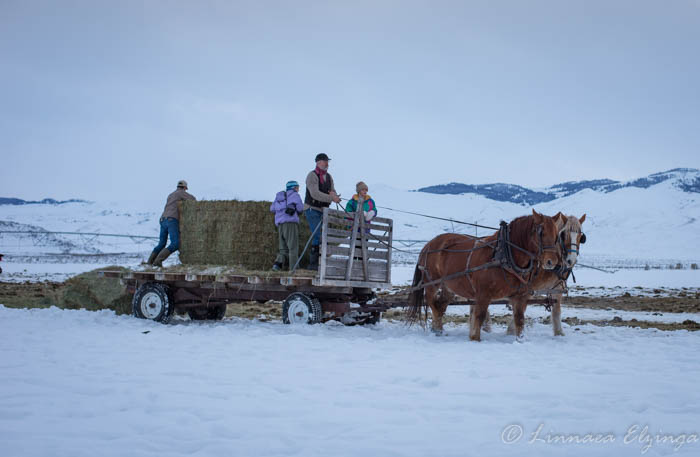
Now, we’re between teams of horses after losing our bold Jingle, our Belgian gelding this past summer. So for now, we pull bales of hay with our four wheel drive pickup. We had to wrench on it a little, but the way I figure it, the whole of our feeding equipment cost about $10,000.
We feed 500 head of cattle with it.
My neighbor fed 500 cattle with his outfit as well. His green iron entourage was conservatively worth over $200,000. If new, he could have been driving a $400K cow feeder.
Sadly, he is now out of business. And bankrupt.
I don’t know how to extricate our agriculture from this trajectory. I can’t just simply offer a transition plan to get back into touch with our land, our animals and our own wellness. It’s complicated.
But when I compare the depreciating debt load of such machinations, the loss of work for our hands, and the disconnect with our soils and land, I pause for a moment and then think unusual thoughts for this day and age.
I think that it might be better to work myself into the ground.
Happy Trails.


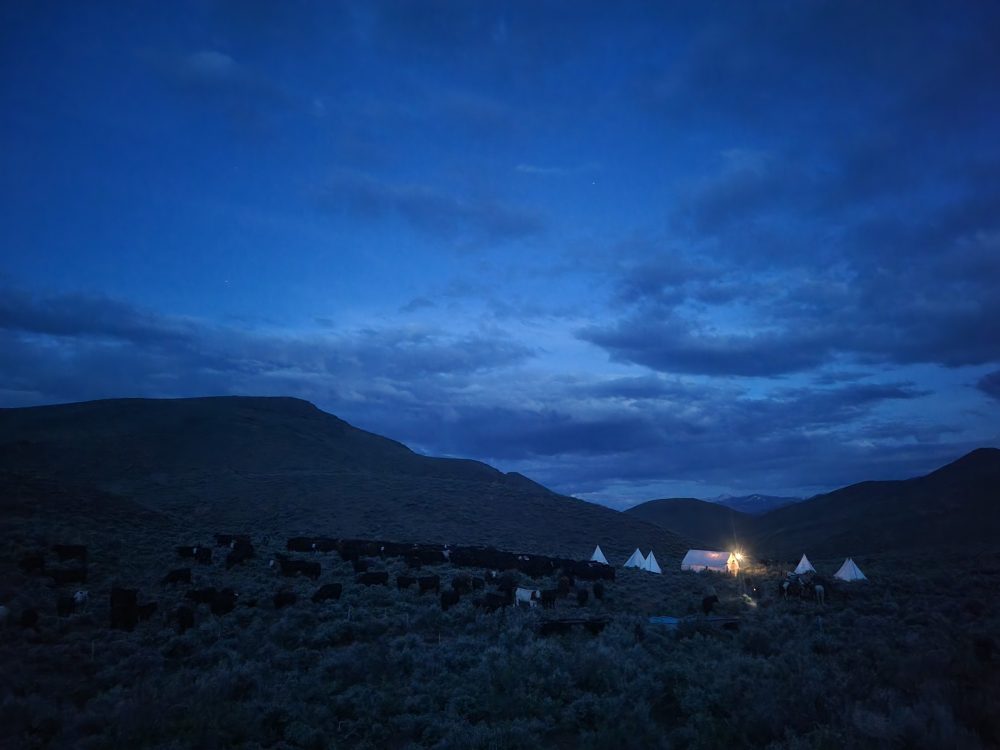

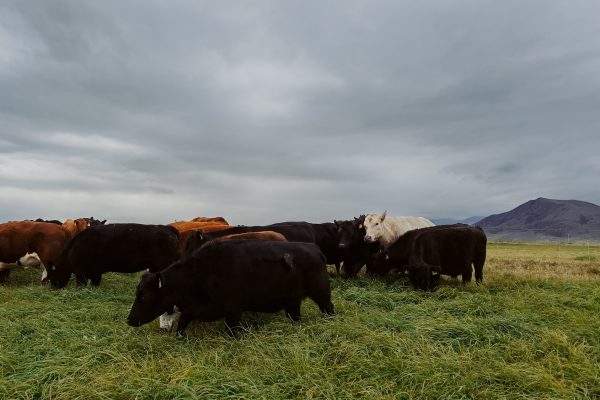


Steven Spickerman
Been working my way through your posts, really well written. Thank you.
Just finished “Working into the Ground”. I agree, extrication from our agricultural downward death spiral is complicated. But there are pathways to move forward on.
I grew up on a small Midwestern farm in the 60’s/70’s and worked with/for those sinewy tough farmers. And watched them take on debt and weight and bankruptcy! Fled west for college and work with forest service (once fought a fire just up the road from where your ranch is!). Re-found agriculture through the eyes/words of Wendell Berry among others in the mid-80’s. In my early 60’s, I now farm up near Lake Superior (for the past 30 years). Certified organic produce plus pastured hogs and grass-fed sheep. I now look much like those tough old farmers I admired as a kid!
Keep up the truly inspirational work. It’s folks like you (and many others) who do show a saner way to farm/ranch.